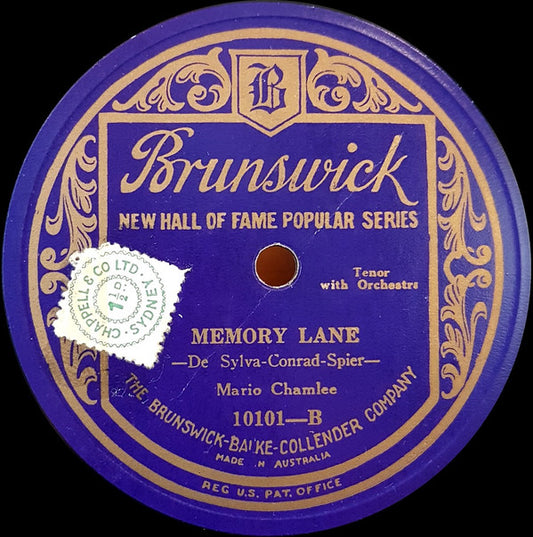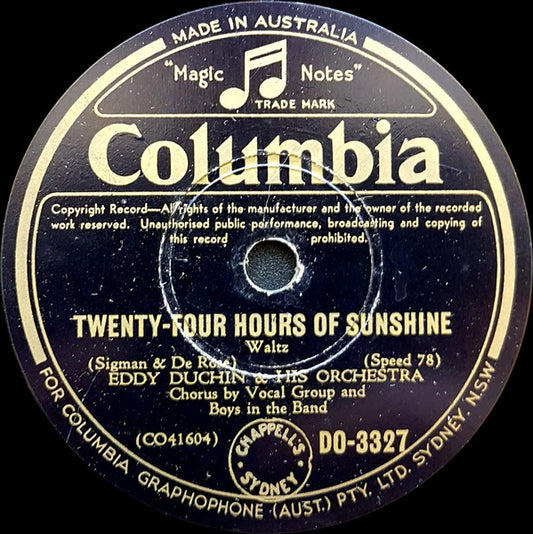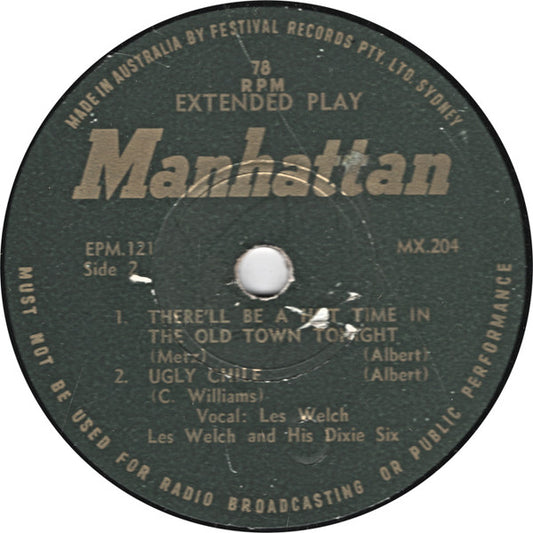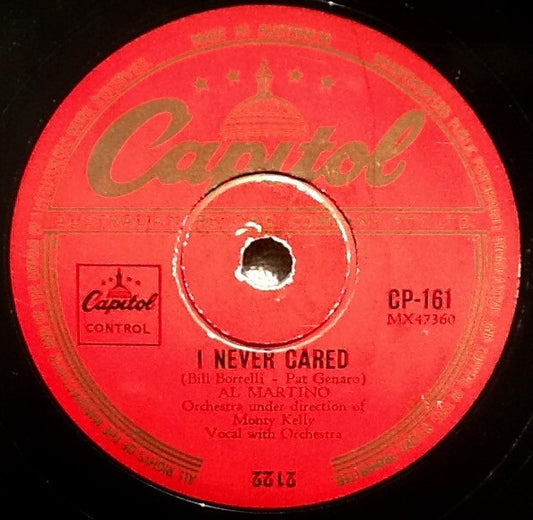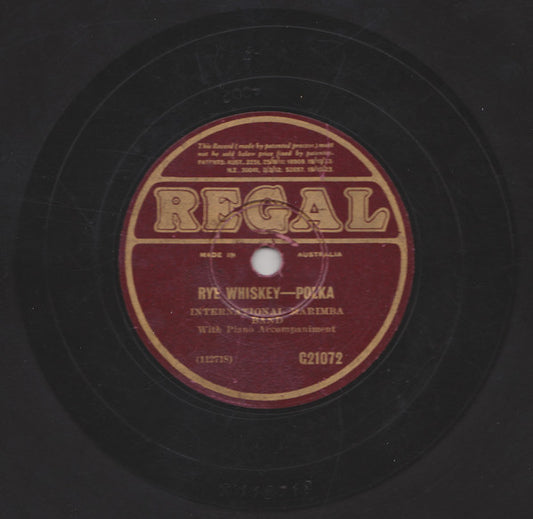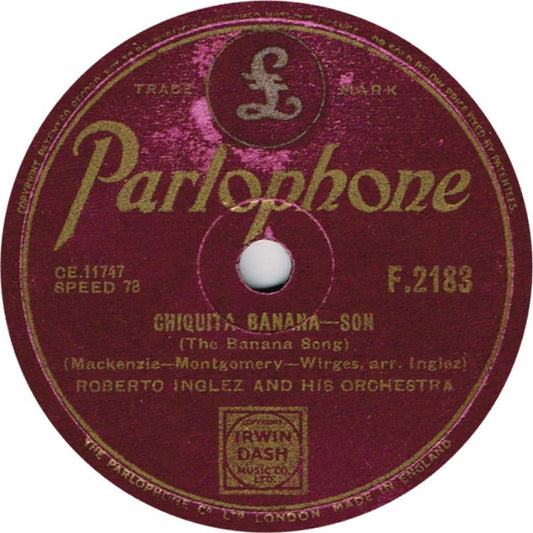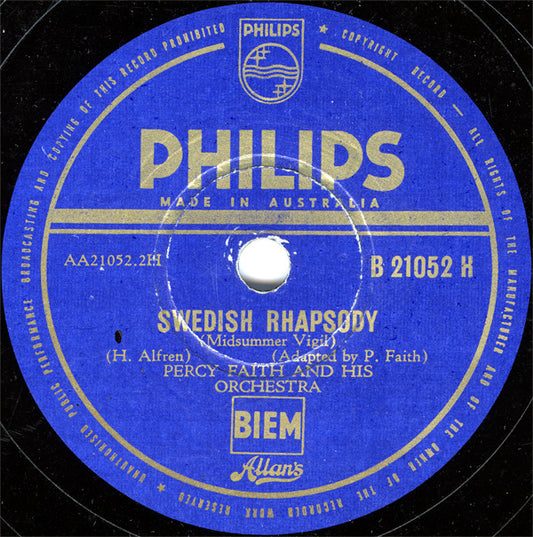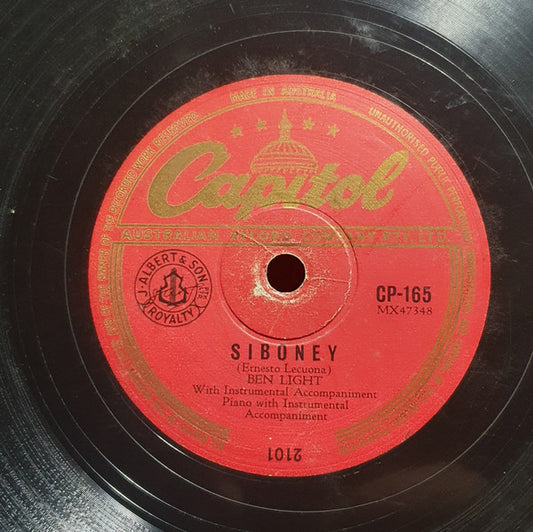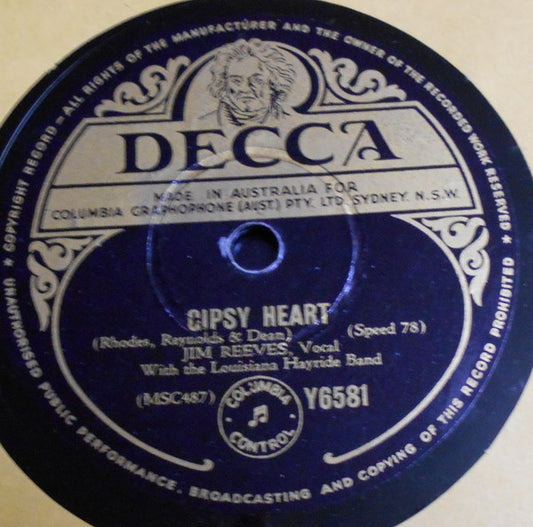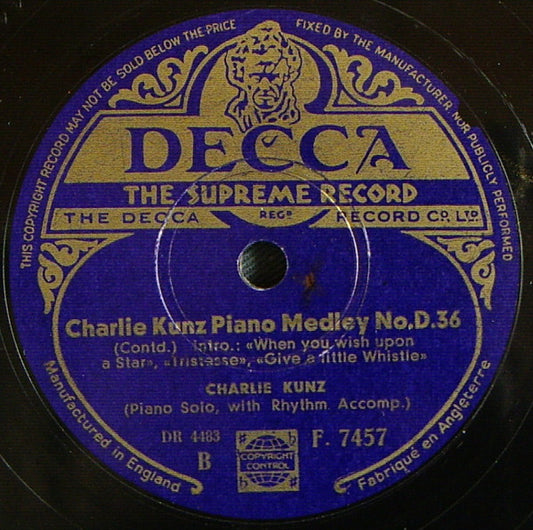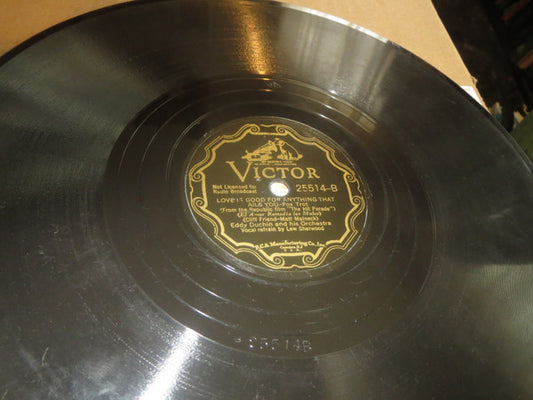Collection: Shellacs
Shellac records, colloquially known as "shellacs," represent a significant chapter in the history of sound recording. Fabricated from shellac resin, a natural substance derived from the secretions of the lac beetle (Kerria lacca), these phonograph discs enjoyed widespread popularity throughout the early 20th century before yielding to vinyl as the predominant medium.
Characterized by their translucent quality, shellac proved eminently suitable for record production. When heated, it could be shaped with precision, enabling the creation of grooves that faithfully reproduced audio vibrations. Thus, shellac records became indispensable for both commercial releases and personal recordings alike.
The manufacturing process was meticulous. It commenced with the crafting of a wax master recording, capturing the nuances of sound. This master served as the template for the record, into which molten shellac was poured and left to solidify. The resulting disc was then meticulously trimmed and polished to perfection.
Operating at 78 revolutions per minute (RPM) and typically spanning 10 inches in diameter, shellac records were renowned for their durability and commendable sound fidelity within the technological constraints of the time.
Many collectors of shellac records believe that the unique recording methods used by artists, often without overdubs, lend these recordings a distinctive charm and authenticity unmatched by other formats. The warmth and character inherent in shellac records make them a joy to listen to, providing a nostalgic glimpse into the musical styles and techniques of bygone eras. These enthusiasts argue that shellac's natural properties contribute to a superior music format, capturing performances in a raw and unaltered state that enhances the listening experience and preserves historical authenticity.
As the mid-20th century approached, advancements in vinyl technology facilitated records with reduced surface noise, ultimately superseding shellac in the mainstream market. However, at Glitter Records, founded by Riley Fitzgerald, the ethos remains focused on preserving and documenting the forgotten sounds of bygone eras. Here, shellac records hold a cherished place, embodying a commitment to safeguarding historical recordings that capture the essence of their time.
In essence, shellac records epitomize an era where natural materials and meticulous craftsmanship converged to capture and preserve music and spoken word, leaving an indelible mark on the evolution of sound recording technology.
-
Mario Chamlee - Marcheta / Memory Lane (Shellac, 10") (Good (G))
Regular price $35.00 AUDRegular priceUnit price / per -
Eddy Duchin & His Orchestra* - Jealous Heart / Twenty-Four Hours Of Sunshine (Shellac, 10", RP) (Good (G))
Regular price $35.00 AUDRegular priceUnit price / per -
Les Welch And His Dixie Six - I Wish I Could Shimmy Like My Sister Kate / Wee Baby Blues / There'll Be A Hot Time In The Old Town Tonight / Ugly Chile (Shellac, 10", EP) (Very Good (VG))
Regular price $35.00 AUDRegular priceUnit price / per -
Dvořák* - Czech Philharmonic Orchestra* Conducted By Vaclav Talich* - Slavonic Dance No. 4 In F Major (F Dur) (Shellac, 10") (Good (G))
Regular price $35.00 AUDRegular priceUnit price / per -
Al Martino - Take My Heart /I Never Cared (Shellac, 10") (Good Plus (G+))
Regular price $35.00 AUDRegular priceUnit price / per -
Betty Hutton / Howard Keel - Doin' What Comes Natur'lly / The Girl That I Marry (Shellac, 10") (Good Plus (G+))
Regular price $35.00 AUDRegular priceUnit price / per -
Donald Peers - Out Of A Clear Blue Sky / Let's Do It Again (Shellac, 10") (Very Good (VG))
Regular price $35.00 AUDRegular priceUnit price / per -
Gene Kelly, Georges Guetary* With M.G.M. Studio Orchestra* And Johnny Green - 'S Wonderful / I'll Build A Stairway To Paradise (Shellac, 10") (Very Good (VG))
Regular price $35.00 AUDRegular priceUnit price / per -
International Marimba Band - Beautiful Helen - Polka / Rye Whiskey - Polka (Shellac, 10") (Good Plus (G+))
Regular price $35.00 AUDRegular priceUnit price / per -
Charlie Kunz - Piano Medley, No. D. 23 (Shellac, 10", Mono) (Very Good Plus (VG+))
Regular price $35.00 AUDRegular priceUnit price / per -
Roberto Inglez And His Orchestra - The Green Cockatoo / Chiquita Banana (Shellac, 10") (Very Good (VG))
Regular price $35.00 AUDRegular priceUnit price / per -
Percy Faith And His Orchestra* - Song From Moulin Rouge / Swedish Rhapsody (Shellac, 10") (Good Plus (G+))
Regular price $35.00 AUDRegular priceUnit price / per -
Ben Light - I'm Getting Sentimental Over You / Siboney (Shellac, 10") (Very Good (VG))
Regular price $35.00 AUDRegular priceUnit price / per -
Jim Reeves With Louisiana Hayride Band - Bimbo / Gipsy Heart (Shellac, 10") (Good Plus (G+))
Regular price $35.00 AUDRegular priceUnit price / per -
Charlie Kunz - Charlie Kunz Piano Medley, No.D.36 (Shellac, 10") (Very Good (VG))
Regular price $35.00 AUDRegular priceUnit price / per -
Eddy Duchin And His Orchestra - Moonlight And Shadows / Love Is Good For Anything That Ails You (Shellac, 10") (Very Good (VG))
Regular price $35.00 AUDRegular priceUnit price / per



